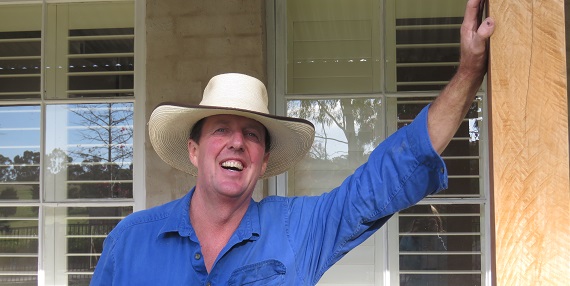Nic Kentish, a champion of the low stress stock handling system, was a recent guest on the RawAg podcast, Episode 4 – where he outlined the game-changing protocols that create a world where stockmen and women get to understand what the animal is thinking. Nic says knowledge of how an animal reacts to different situations is information that can be used with great effect.
Does being a stockman come with your genes; or is it something you learn about later, as you go?
Unless, of course, you really take an avid interest in it.
You look at most little kids, the first time they walk across the yards they pick up a stick – so I think there is a little bit of the caveman in all of us.
But that child may well go on to be an empathetic stock person, while a sibling may never have that level of understanding.
People we deal with are able to add ‘stockman’ to their resumes, and not a lot of people do that. And they handle stock in such a way as to deliver the most natural methods of guiding an animal to what it wants to do, not what a human necessarily wants.
As far as I am concerned, your worst stockmanship comes out when the dust of the cattle truck coming up the drive is closer than the dust of the cattle that still aren’t in the yards.
Knowing time has beaten you, you are doing everything to beat the clock and the animal senses your dilemma and from there; saying to an animal, ‘quick, quick, hurry up’, throws everything out of balance.
At which point you have to let time disappear and ultimately it will be just as quick, probably quicker, to do it this way, the animal’s way, rather than by trying to force them to work at your ever-tightening schedule.
Carrying a stick is not that useful after you start using LSSH – one of our trainers said he gave up using a stick because that was the last thing that hit him after his wife walked out of the yards on afternoon.
When people come from diametrically opposed understandings of stockmanship, they find out there is another language, but it is the language of animals and not humans,
Surprisingly, they’re the people who keep in touch with me and other trainers for years after, still amazed they can now speak another language, a language common to all farming enterprises.
Fundamentally, when we run a school, we try to introduce people to the animal’s frame of mind, what does it want to do and how do we let it?
Understanding the principles of movement and attitude are crucial – just like you animals have days when they are a bit off, they haven’t had enough feed, or enough water, and they’re just not in the mood.
How do you work all that out?
And so how the two of you interact even before you get into the paddock, or into the yards, is critical as the animals can sense you way off and sense what sort of mood you are in, what’s happening, your level of urgency, whether you are more like a predator than a friend.
They know this stuff, they just know it, and if you sit and watch them you will see they are pretty good survivors.
Low Stress Stockhandling places the emphasis on mutually beneficial outcomes for stock and handlers regardless of yard design.
Its foundation is four basic animal instincts to explain what animals want and why they behave the way they do.
In addition; there are seven principles that guide how we can interact with the animals; to work with those natural instincts and produce low stress outcomes.
If the right methods are implemented, livestock will move with less stress through most facilities. Moving stock can be a low stress, painless activity for the livestock and the handlers.
The business benefits of training people in animal handling are enormous; it leads to improved production gains, better meat quality and higher economic return for the livestock industry.
Research shows one of the major causes for losses in meat quality (bruises, mortality, meat downgrades) is from poor handling by the stock handlers.
Animals can be moved through the entire system with minimal force from people or mechanisms.
Meat quality defects can be caused by poor transport and preslaughter handling (more bruising, higher DFD, PSE and carcase downgrades).
Dark cutting meat is a result of the failure of muscle to produce enough lactic acid to reduce its pH after death from about 7.2 to 5.7 or less.
The failure is because of a lack of glycogen in the muscle as a result of either poor nutrition, not allowing for it to build up or stress in handling causing too much to be used up before the animal is slaughtered.
Jim Lindsay, the founder of LSS, believes a person’s attitude is the key to obtaining benefits for both people and livestock.
The right attitude promotes harmony between man and animal in the work environment. We can put ourselves in a position to be able to consider the situation from an animal’s point of view and therefore have an obligation to do so. When we have knowledge of how an animal reacts to different situations we can use that information to effect. Being an effective stockhandler is about knowledge, understanding, attitude and patience.
To hear the Podcast, go to Raw Ag, Episode 4.





